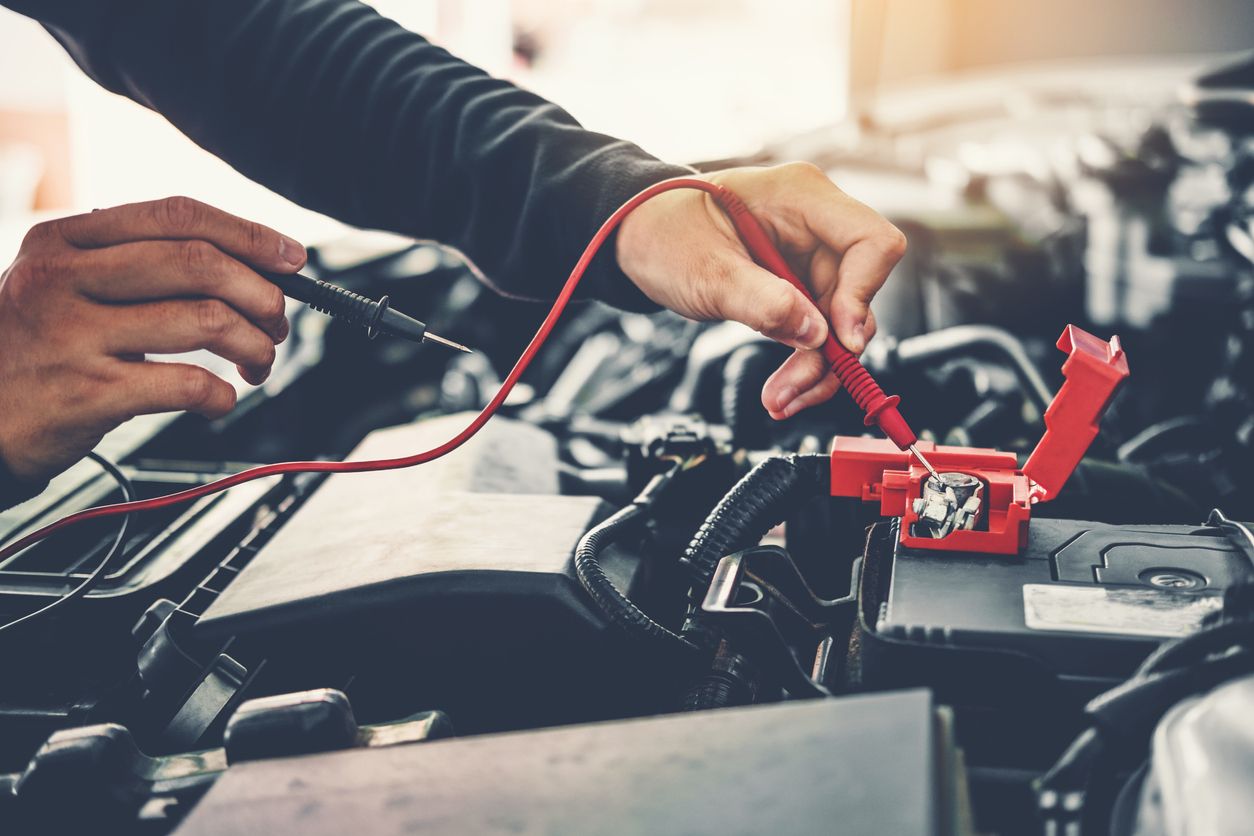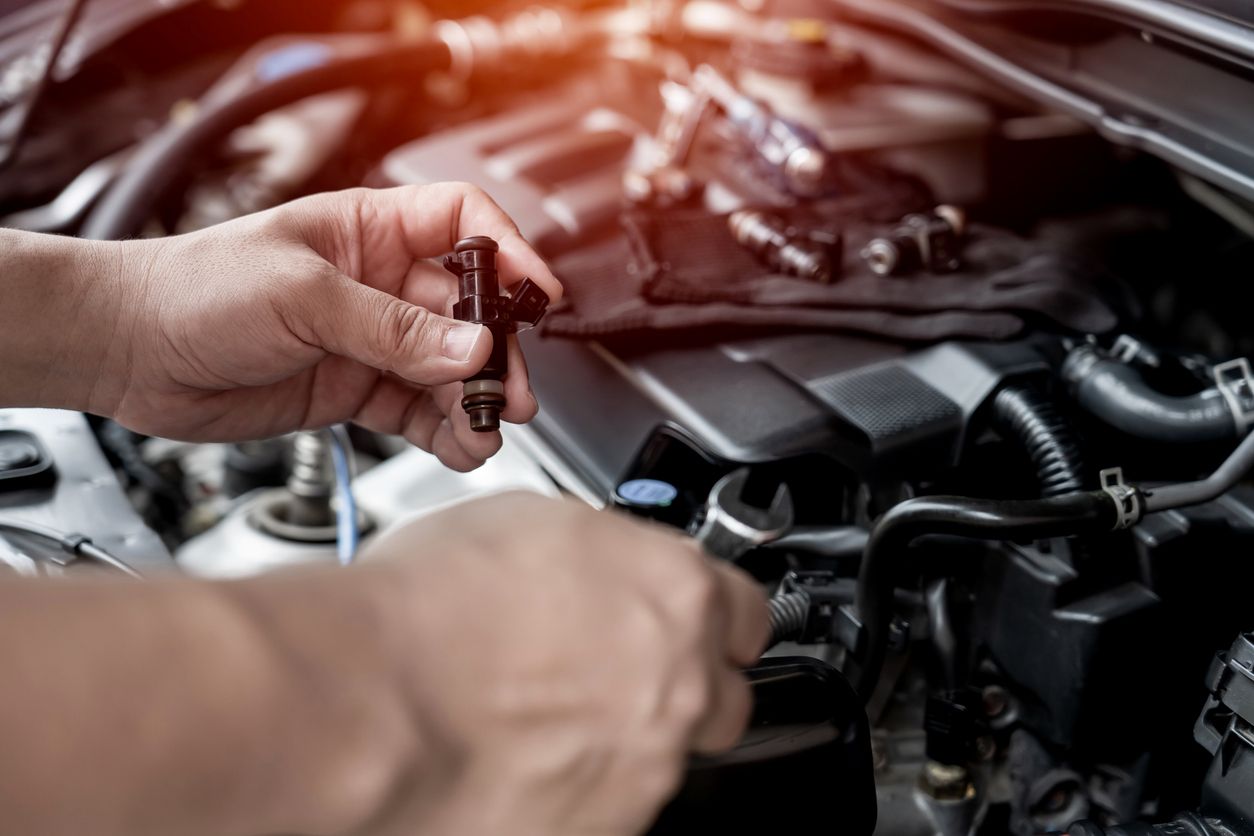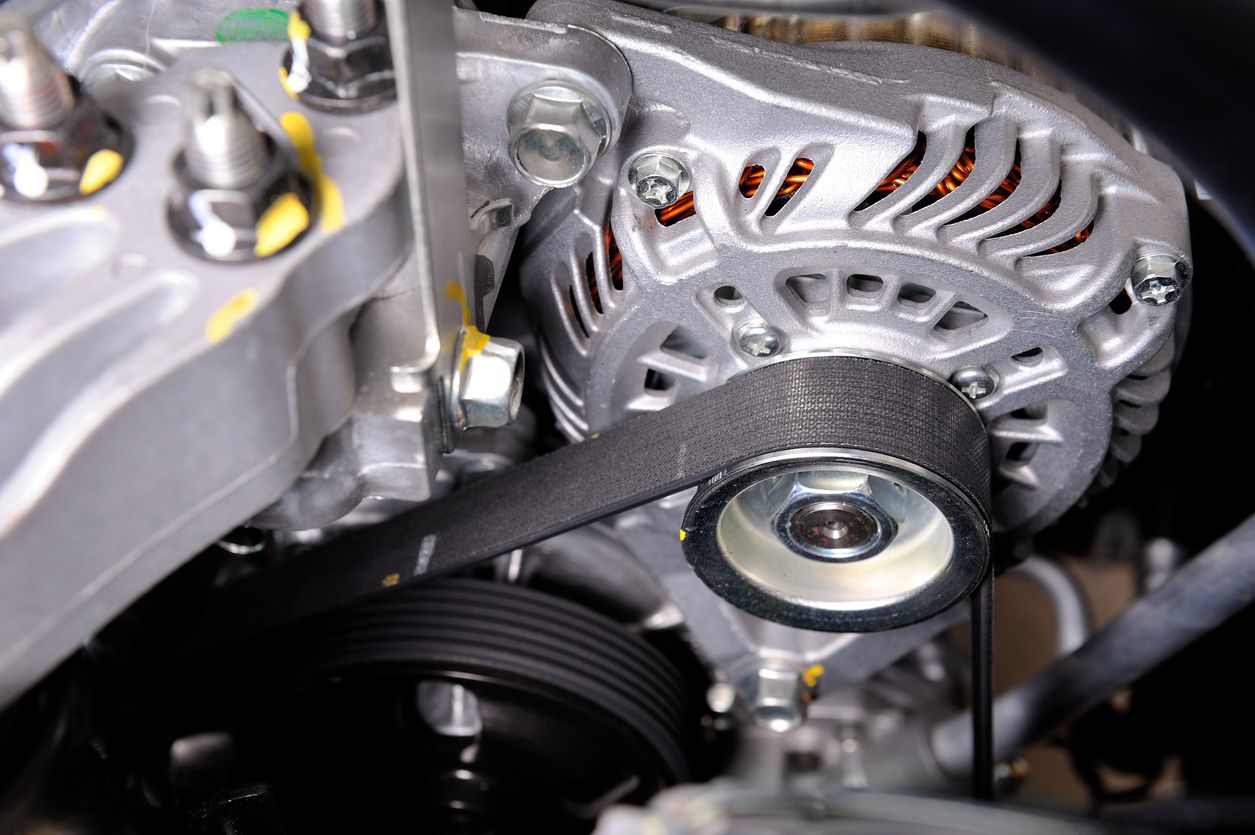Your battery, alternator, and starter work together to get your vehicle started and keep it running smoothly. But since they all work together, it can be difficult to determine which one is the culprit of your vehicle’s electrical problems.
Fortunately, with some straightforward troubleshooting you can identify the signs of a bad starter, alternator, or battery and get your vehicle back on the road!
The Electric Trifecta — How it Works
When starting most vehicles, stored electricity from the battery engages your starter motor, which meshes the starter gear with your flywheel and turns your engine over. Once started, one of your engine’s belts rotates the alternator’s pulley, which generates electrical power by spinning an electromagnet located inside a network of copper windings called a stator. That power is then used to charge the battery and power nearly all of your vehicle’s electrical system while the engine is running.
Common Causes of Failure
As with most components, batteries, starters, and alternators generally fail due to the wear and tear of time. However, there are certain conditions that can shorten their life expectancy, including:
- Exposure to Water: When water gets inside of your starter or alternator, it can wash away lubricants, corrode metal parts, and short out electrical connections.
- High or Low Temperatures: Car batteries normally need to be replaced every 3-5 years, but extremely hot or cold environments can cause batteries to fail sooner. Excessive engine heat can also cause parts in starters and alternators to wear out faster.
- Improper Installation: Accidents happen — poor starter alignment can damage the starter gear or flywheel teeth, over tensioning of the alternator belt can wear bearings out, and loose electrical cables can cause all sorts of problems.
How to Tell If Your Battery, Alternator, or Starter Is Bad
Unfortunately, the synergy that makes this trio so effective can also make it a headache to diagnose. The components in this system rely heavily on one another — the battery needs an alternator, the starter needs a battery, and the alternator needs a battery and a starter to begin producing power. So when one component fails, the rest may experience problems as well — making it difficult to pinpoint the issue.
Signs of a Bad Battery
Whether your battery died post-drive, or when parked, the result is the same — the next time you try to start your car, it won’t. Instead, you might experience:
- Slow engine cranking
- A loud series of clicking sounds from the starter
- Dim interior lights and/or headlights
- Illuminated check battery or check engine light
If your battery is in really bad shape, you may notice swelling or bloating of the battery case, and possibly even a sulfuric rotten-egg smell coming from your battery. If that’s the case, you can skip the troubleshooting, because you definitely need a new battery.
Signs of a Bad Alternator
Failing alternators may struggle to generate enough power to keep everything operating properly. So if your alternator is on its way out, watch for these symptoms while your vehicle is running:
- Illuminated check battery or check engine light
- Voltage gauge reads low or too high
- Grinding or squealing noises from under your hood
- Your battery keeps dying
- Your headlights are dim, overly bright, or flicker
- Your power-windows roll up slower than normal
Signs of a Bad Starter
Sometimes, starter failure can be obvious. In serious cases, your starter can start smoking due to overheating or electrical failure. Often, though, symptoms are more subtle, so look for these signs of a failed starter
- Whirring, grinding, or clicking sounds when trying to start your car
- A loud single click while trying to start the vehicle with no engine crank
- The instrument cluster, headlights, and radio work normally, but nothing happens when you turn the key
The Jump-Start Test
Phew, that’s a lot of symptoms to look for. Fortunately, a quick jump-start is often the most straightforward way to determine which part is the culprit of your automotive problems. Start by connecting a jumper box or jumper cables from a good vehicle’s battery to yours. After waiting a few moments, try starting your vehicle.
- If it doesn’t start, your starter may be the problem, since no matter how charged the battery is, your car won’t start without a working starter.
- If it does start, but dies when unhooking the jumper cables, your alternator likely isn’t providing the current your vehicle needs to keep running.
- If it starts and continues running after removing the jumper cables, your battery was likely dead and you may need a new one or to have it charged.
You’ve Identified the Problem — Now What?
A healthy starter, battery, and alternator are essential to keep your vehicle running smoothly, and the best person to get to the bottom of your car woes is a professional technician. We can also check to see if a bad starter or alternator ruined your battery.
Stop by your nearest Tires Plus and we'll do the investigation for you — get a Complete Vehicle Inspection, battery care services, and more. We'll even recommend the best components for your ride should you need any replacements. Get started by scheduling an appointment today!



